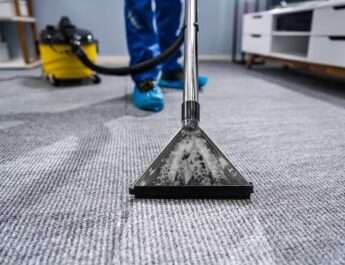By: M Umair
Reverse osmosis is a fantastic way to make water clean and safe. It uses a special filter called a membrane and some pressure to push out all the bad stuff from the water. This way, we get pure and safe water to drink.
In this blog post, we will discuss the science behind reverse osmosis water filtration in detail, so stick around with us till the end.
Understanding of Reverse Osmosis (RO):
In the reverse osmosis (RO) water purification process, impurities and contaminants like debris, salt, and chlorine are removed from drinking water by use of a semi-permeable membrane, which is a synthetic liner.
In addition to pollutants and sediments, reverse osmosis is capable of eliminating bacteria, which you do not want to consume. It removes all impurities from water down to the molecular level, leaving just pure H2O.
The Science Behind Reverse Osmosis Filtration
The RO water filters eliminates a variety of contaminants or impurities from water. In reverse osmosis systems, the water is forced to pass through a special chamber with a strong filter called a membrane. This filter is like a barrier that can catch and remove tiny particles and even really small living things in the water, down to 0.0001 microns.
The toxic contaminants and impurities in the water get washed away in a separate stream called RO concentrate, and it goes down the drain. So, water pressure helps clean the water by forcing it through this effective filter. The water molecules go through the membrane, and collect the clean water.
This purified water can be used for drinking or other clean water needs. And when you use water that is completely safe and clean, it will result in improved well-being and health.
Now, we think you will have an idea of how a RO filtration system works to filter water.
Application of reverse osmosis:
Some of the most common applications of reverse osmosis are as follows:
Home use:
Reverse osmosis water can be used at home for drinking purposes. This will reduce the overall risk of health issues. Additionally, you can also consider using RO water for cooking purposes for better health.
Apart from this, you should also use it for bathing and washing your face, which will help improve skin glow and freshness.
Wastewater treatment:
In wastewater treatment, reverse osmosis works like a cleaning wizard. It takes dirty water and turns it into something fresh and ready to be used again. It’s like giving water a second chance to be clean and useful.
Boiler feed water:
Industrial boilers are much more sensitive to hard water. The use of hard water at high temperatures causes several problems, like scaling, insufficient heat transmission, longer cleaning times, and a shorter boiler vessel life cycle.
Thus, softened water should be supplied and fed to the boiler system. To attain this objective, many industrial sectors like chemical, mechanical, and pharmaceutical sectors use reverse osmosis water filtration systems for pre-boiling water treatment.
Municipal water treatment:
Municipal water serves both homes and businesses, but its importance extends beyond everyday uses. In industries like food and beverages, maintaining water quality is vital to ensure a consistent taste in sodas or recipes, no matter where they are produced.
Due to factors including salinity, chemical residue, and microbiological contamination, poor water quality has a significant negative impact on the chemical and pharmaceutical sectors.
To ensure high-quality water, commercial reverse osmosis systems are widely used to cleanse municipal water.
Desalination of seawater:
In numerous densely populated regions, the primary water source is oceans and seas, featuring salt levels reaching up to 35,000 mg/l. Industries like marine operations, offshore drilling, maritime transport, and cruise ships heavily depend on this high-salinity water.
However, the consistent use of water with high salt levels can harm marine equipment and is unsuitable for drinking. To address this issue, marine industries use high-pressure commercial reverse osmosis systems equipped with specialized membranes. These systems aid in desalination while also reducing chemical and bacterial contamination.
Spot-free rinse:
In industries and commercial settings, clean water is crucial for tasks like equipment cleaning and car washing. Regular water can contain minerals that cause scaling and spots, harming surfaces and equipment.
To prevent damage and extend product life, reverse osmosis systems are used to purify water, removing harmful salts and chemicals, and ensuring a spot-free rinse. This simple process helps maintain equipment and surfaces in top condition.
Frequently Asked Questions:
What’s the main principle of reverse osmosis water filter?
Reverse osmosis (RO) is a method for purifying water that involves using a partially permeable membrane to eliminate ions, undesirable molecules, and larger particles from drinking water.
This process keeps the impurities on one side of the membrane while the pure water is on the other side.
How does a reverse-osmosis water filter work?
In a reverse osmosis system, water undergoes a two-step filtration process. Initially, a prefilter is used to eliminate sediment and chlorine. Subsequently, the water is pressured through a semipermeable membrane to eliminate dissolved solids.
Once through the RO membrane, the water undergoes further polishing via a postfilter before reaching a designated faucet for consumption.
Why reverse osmosis system is considered the best?
Reverse osmosis is extremely effective at getting rid of various water contaminants. It can remove impurities such as chlorine, lead, arsenic, nitrates, fluoride, and others, resulting in water that is cleaner and purer. A lot of individuals notice that water from an RO system has a fresh and crisp taste compared to tap water.
Are RO filters most costly than regular ones?
Yes, reverse osmosis filtration system are usually more expensive than normal water filters. This is so because, they are highly advanced and effective at removing contaminants from the water. Additionally, they also greatly improve the taste of water.
Final Words
Reverse osmosis filtration is the most effective filtration process because it involves forcing the water through a membrane to make it free from contaminants. In this article, we have described the whole filtration process in detail.



